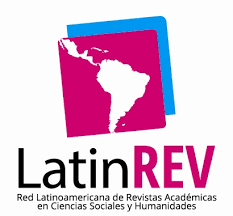SUSTAINABILITY IN THE CIVIL CONSTRUCTION INDUSTRY: USE OF CONSTRUCTION AND DEMOLITION WASTE IN THE MANUFACTURE OF ELECTRIC LAYING POSTS OF REINFORCED CONCRETE
Keywords:
recycled aggregate, CDW, Precast, concrete poleAbstract
The construction and rehabilitation of buildings and urban infrastructures generate solid waste, which must be managed in order to guarantee their correct disposition, so as to mitigate the environmental impact. The use of Construction and Demolition Waste (CDW) in the manufacture of concrete is a common practice in developed countries, being an alternative to reduce the consumption of fine aggregate or cement. For this work, a pilot study was carried out on the addition of CDW in the production of concretes with moderate resistances for the manufacture of electric poles. For this purpose, the ABCP/ACI dosage Method (1980) was used, as a binder the cement CPII-Z-32, fine and coarse aggregate, and CDW as study material with 5 to 15% of proportion. This material, was evaluated in fresh state, through the slump tests and specific density, already in the hardened state, was analyzed the resistance to axial compression at 7, 14, and 28 days, and the indirect tensile strength and modulus of elasticity were tested at 28 days. In conclusion, the concretes developed with CDW presented resistances slightly lower than the concrete with conventional aggregates, being around 8.0% in the resistance to axial compression, 3.0% in the tensile strength and 10.0% in modulus of elasticity, however, the mechanical properties achieved are appropriate for use in precast concrete element.
References
CAETANO, R. I. S. (2013). Influência de agregados reciclados provenientes de RCD no desempenho de argamassa de cal aérea. Tesis de maestria. Universidade Nova de Lisboa. Portugal.
BARRA, A. T. (2011) - Caracterização física e mecânica de argamassas não estruturais com agregados finos reciclados. Tesis de maestria em Engenharia Civil – Perfil de Construção. Universidade Nova, Lisboa. Portugal.
BRAGA, M. (2010) - Desempenho de argamassas com agregados finos provenientes da trituração do betão – efeito de filer e pozolânico. Tesis de maestria em Engenharia Civil, Instituto Superior Técnico, Lisboa.
CASATI , R. (2009). Evolución y Tendencia de la Cantidad, Generación y Composición de los Residuos Sólidos Municipales de la Ciudad de Asunción. Tesis de maestría. Paraguay.
DAVI ES, F. S. (2016). Utilização de agregados reciclados de concreto na fabricação de tubos de concreto. Trabajo Final de Grado. Universidade Federal da Integração Latinoamericana (UNILA). Foz de Iguaçu, Brasil.
FELI CIANOno, T. C O. (2019). Avaliacao experimental de barreira capilar com RCD como camada de bloqueio para coberturas finais de ARSU. Trabajo Final de Grado. Universidade Federal da Integração Latinoamericana (UNILA). Foz de Iguaçu, Brasil.
LUCAS, V. (2011) - Construção Sustentável – Sistema de Avaliação e Certificação. Dissertação para obtenção do grau de mestre em Engenharia Civil – Perfil de Construção. Faculdade de Ciências e Tecnologia da Universidade Nova, Lisboa.
SECRETARIA DEL MEDIO AMBIENT E (SEAM). Construcción de capacidades y asistencia técnica para promover la participación de Paraguay en el mercado de carbono. Junio, 2011.
SECRETARIA TECNI CA DE PLANIFI CACION (STP). (2004). Evaluación regional. Servicio de manejo de residuo solidos municipales: Informe analítico. Organización Panamericana de la salud.
Downloads
Published
Versions
- 2023-07-10 (2)
- 2020-12-31 (1)
How to Cite
Issue
Section
License
Copyright (c) 2020 Revista Científica OMNES

This work is licensed under a Creative Commons Attribution-NonCommercial-ShareAlike 4.0 International License.
The Editorial Committee of the Journal reserves the right to introduce formal modifications necessary to adapt the text to the publication standards, for this reason, the digital version of the article presented must be modifiable.
Once published, the printing and reproduction rights belong to the Publisher. It is optional for the Editor to allow the reproduction of the article. In this way, it works with the Creative Commons 4.0 license, which deals with non-commercial recognition, share alike.






